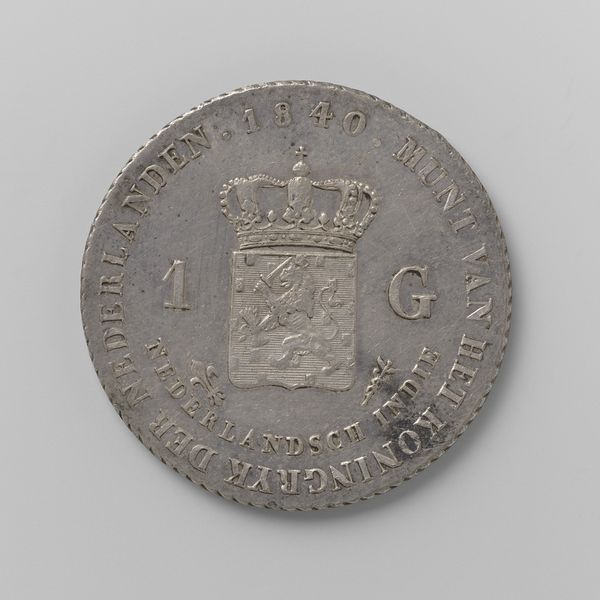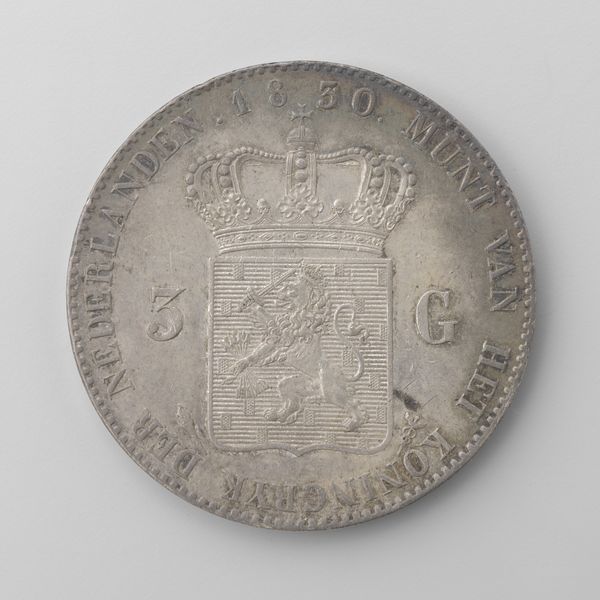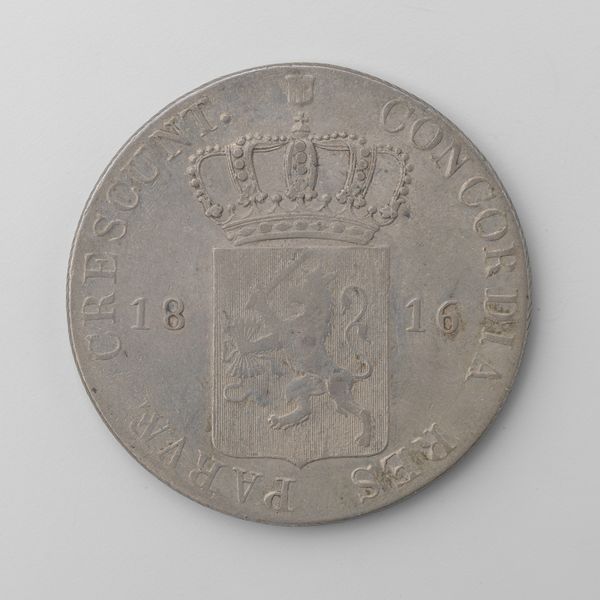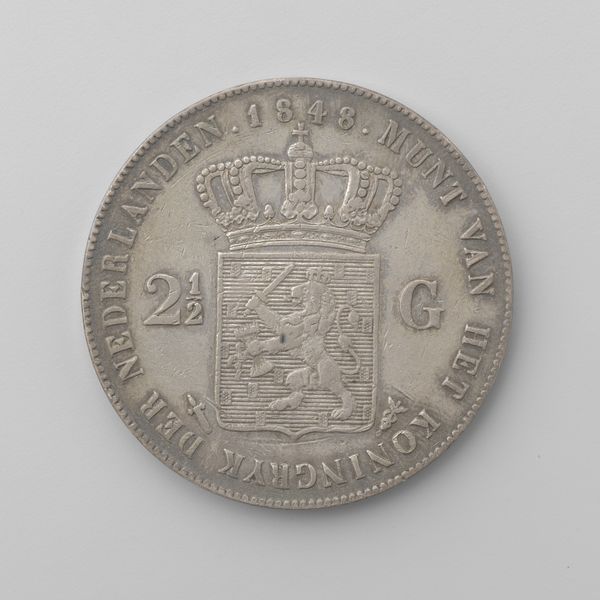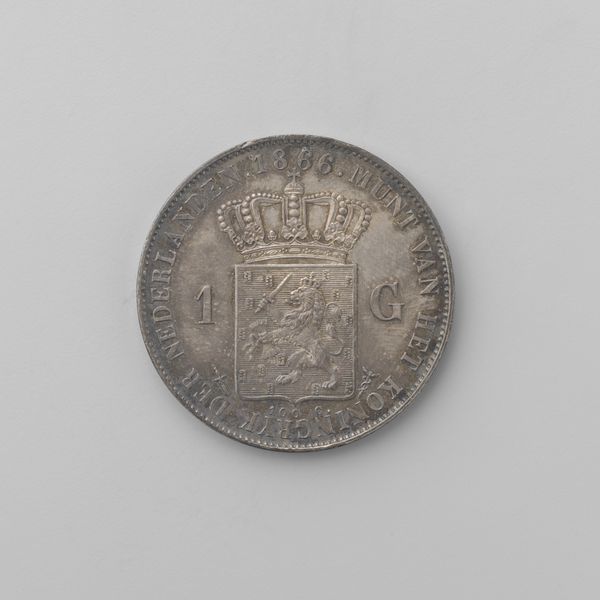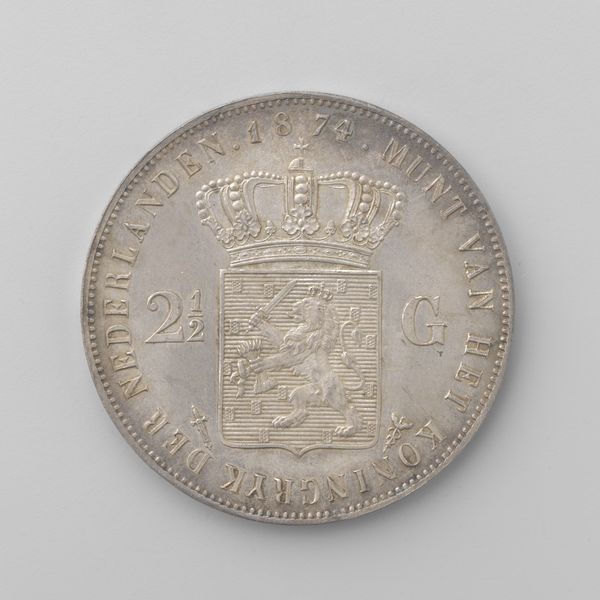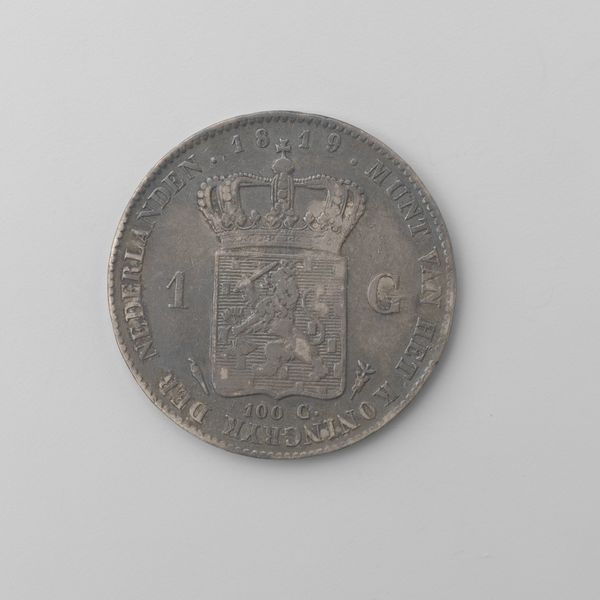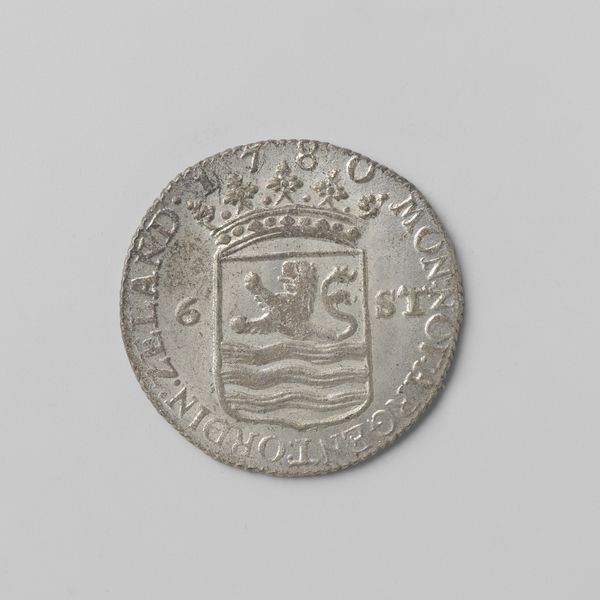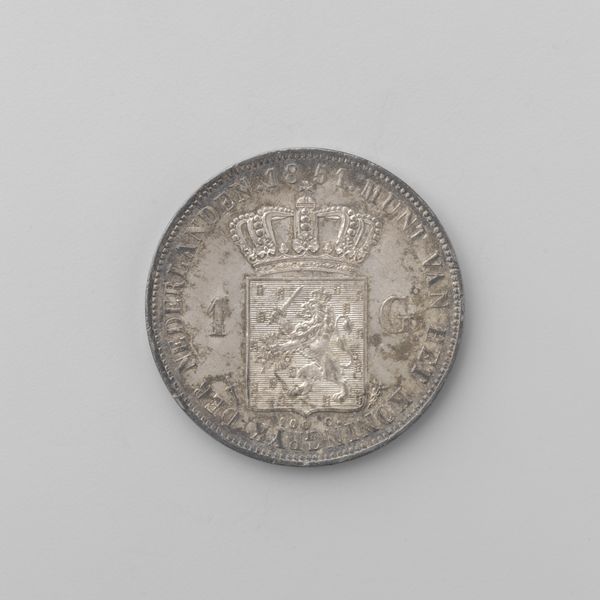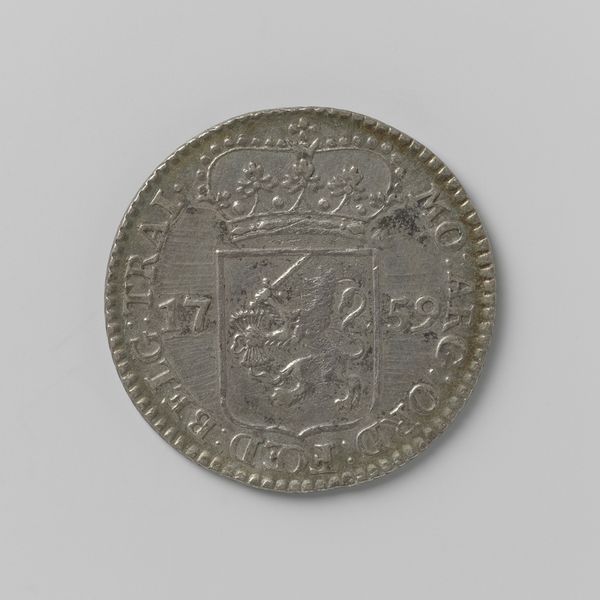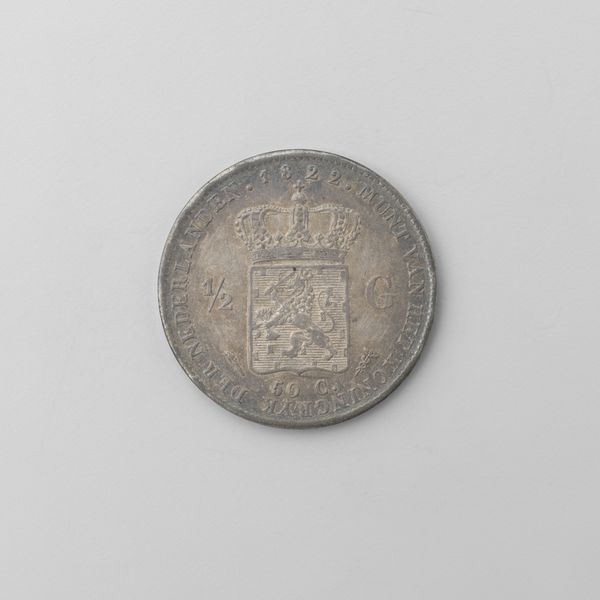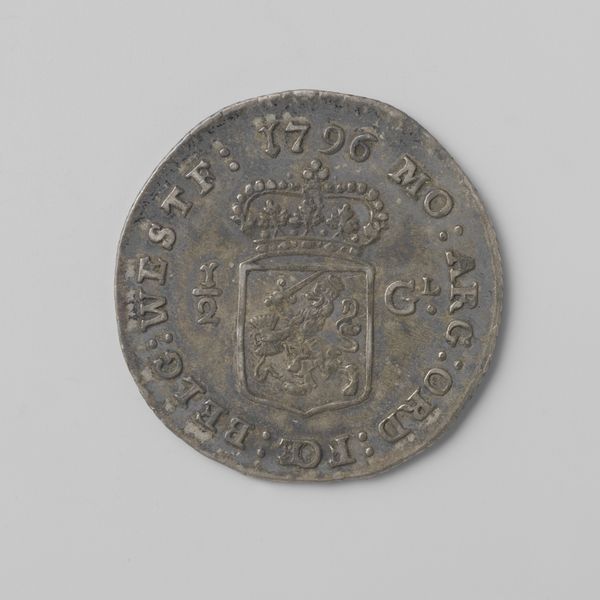
silver, print, metal
#
portrait
#
silver
#
dutch-golden-age
# print
#
metal
#
ceramic
#
islamic-art
#
history-painting
#
product photography
Dimensions: diameter 3.0 cm, weight 10.00 gr
Copyright: Rijks Museum: Open Domain
Curator: Here we have a “Gulden van Nederlands Indie”, or Guilder from the Dutch East Indies, dating back to 1839. It offers a fascinating glimpse into the intersection of Dutch colonialism and monetary production. Editor: The first thing that strikes me is the starkness of the silver. It feels…cold, almost clinical, despite being nearly two centuries old. Curator: That reflects, in part, the value system it embodied. Silver was sourced globally, then processed using specific minting techniques. It represents an accumulation of material resources and human labor extracted across colonial trade routes. The controlled environment of its production, the design itself, is an assertion of power through economic means. Editor: Absolutely. Look at how the inscription practically encircles the heraldic imagery – a lion rampant beneath a crown. It visually reinforces the relationship between Dutch royalty, commercial enterprise, and the administration of its overseas territories. I imagine this coin, even as a singular material object, would have been loaded with symbolic weight, circulating messages of dominance and wealth. Curator: Indeed. What's also crucial to understand is the craftsmanship involved in creating the dies for these coins, which required highly skilled labor, contributing to their perceived worth. And beyond their intrinsic value as currency, these coins became embodiments of Dutch national identity and projected financial might on a global scale. Consider how such a mass-produced object shaped social interactions at every level, mediating between ruler and ruled, colonizer and colonized. Editor: Thinking about that social context makes the coolness seem even more pronounced. The deliberate construction of value masks all the complexities – and human cost – involved in the extraction, production, and dissemination of this small disc of metal. Curator: Exactly. So much history compressed into something seemingly simple. It invites us to question how monetary objects served as not just exchange mediums, but tools for establishing power. Editor: It certainly does. Examining the means of production allows one to view this coin, not merely as a unit of currency, but as a political artifact, loaded with symbolism. Curator: It prompts an important reassessment of the value we ascribe to artifacts and prompts deeper questioning of the colonial past and the long-lasting ramifications of power.
Comments
No comments
Be the first to comment and join the conversation on the ultimate creative platform.
